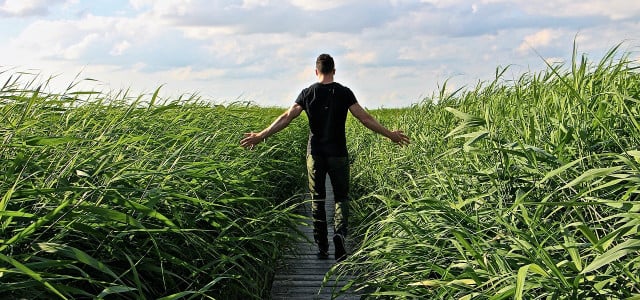
Running backwards is anything but a well-known training method – but according to one expert, that’s not right. Due to numerous health benefits, more people should incorporate the change of direction into their everyday lives.
Walking and running backwards is a very unusual form of locomotion for most people. However, there are some useful advantages to reversing the direction of your running, at least for a short while.
Anyone who jogs regularly and is familiar with the technique has certainly come across the running ABC. This is a ready-made running school that can help you improve your own running style. Running backwards is part of the program. But even non-runners should try running backwards.
Running backwards: gentle on the joints and effective against back pain

(Photo: CC0 / Pixabay / un-perfect)
Dr. Thomas Schneider, head of the movement and gait analysis center at the Gundelfingen Joint Clinic, explains to the news agency Spot on news the positive effects of the change in direction. “The otherwise usual, always the same strain on the body is completely changed,” says Schneider.
From an orthopedic point of view, walking backwards is particularly beneficial in terms of posture, says Schneider. When people walk backwards, they automatically pay more attention to their posture and therefore walk more upright. This effect is particularly noticeable when you don’t have to constantly turn your head to look for possible obstacles.
Running backwards also has a positive effect on coordination skills. As Schneider explains to Apotheken-Umschau, full concentration is required in order not to fall over.
In addition, regular backward walking can reduce and prevent back pain, says Schneider. This is because the backward movement improves the flexibility of the hip flexors, among other things. The quadriceps muscles in the thigh are also strengthened and the ability of the knee joint to extend is improved.
Another advantage: In contrast to walking forwards, walking backwards is easier on the heel. This is because it does not hit the ground as hard, meaning that the heel fat pad is less stressed. This is why walking backwards also helps with heel pain or heel spurs, for example. According to Schneider, the knee joints also benefit from walking backwards. Since you take smaller steps, you do not experience the typical shock load that can otherwise affect your knees when running or jogging.
As Cologne sports scientist Prof. Ingo Froböse explains to Apotheken-Umschau, running backwards also trains your balance. Since the ball of your foot hits the ground first when running backwards, it is more difficult to maintain your balance. In addition, trying to maintain your balance strengthens the muscles in your calves, back and torso.
How to train running backwards

(Photo: CC0 / Pixabay / Couleur)
According to Schneider, running backwards can be a useful addition to a normal walk. Beginners in particular should only do the movement slowly and mindfully for a few meters and minutes. Then you can gradually increase the distance and speed. If that works well, you can even go from walking to light jogging, the expert emphasizes to Spot on news.
The choice of shoes is also important, says Froböse. You should opt for good running shoes with flexible soles.
To avoid running over potential tripping hazards, the sports scientist recommends starting in a sports hall or on a field. It can therefore be a good idea to do the training with someone accompanying you. This way you can take turns – one person always runs forward and looks out for obstacles, while the other person runs backwards.
For whom running backwards is not suitable
However, according to Schneider, running or walking backwards is not advisable over long distances: “Walking backwards is a good way to supplement your training, but it is not suitable as a frequent form of locomotion.” Due to the unfavorable twisting of the neck, running backwards for long periods of time can damage the neck muscles. In addition, the risk of accidents increases over longer distances.
In an interview with Apotheken-Umschau, Schneider also advises against running backwards for people who have an unstable ankle, struggle with balance problems, have been diagnosed with cardiovascular disease or have problems with the cervical spine or the shoulder-neck area.
In general, the orthopedist recommends varying your movements slightly in everyday life. You should also make sure to step gently and take smaller steps. This way, people can prevent back and joint problems.
Read more on Techzle\.com:
- Going for a walk: How healthy a few steps a day are
- Forest bathing: Shinrin Yoku, the Japanese nature therapy
- Slow Jogging: How to run mindfully
Edited by Nora Braatz